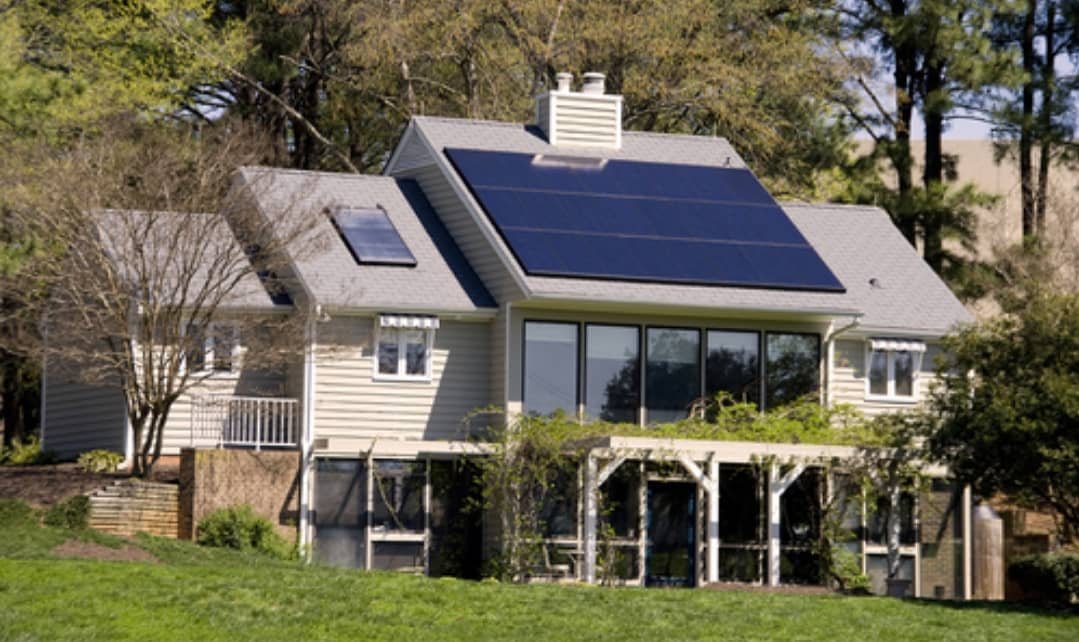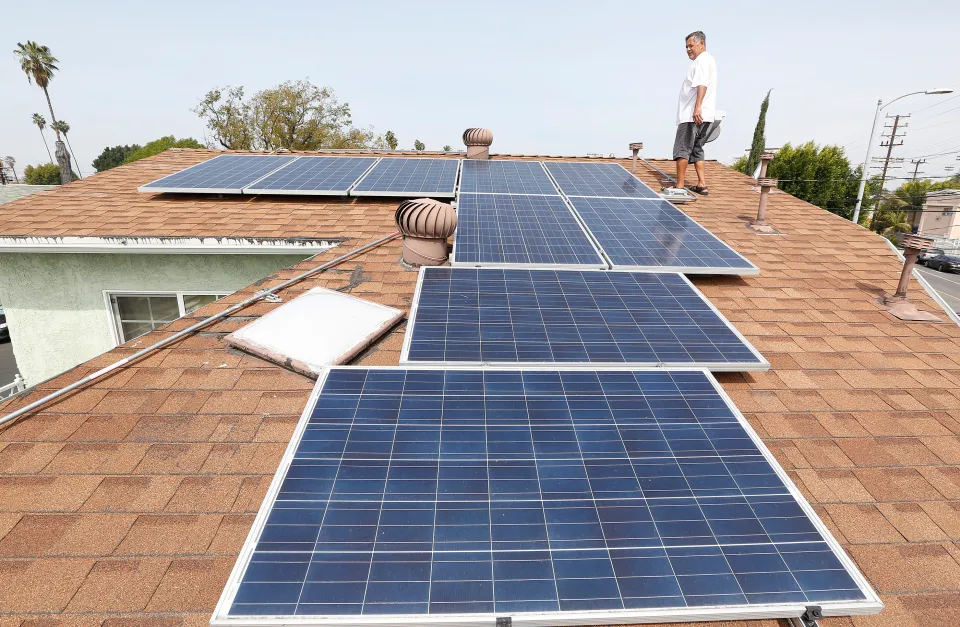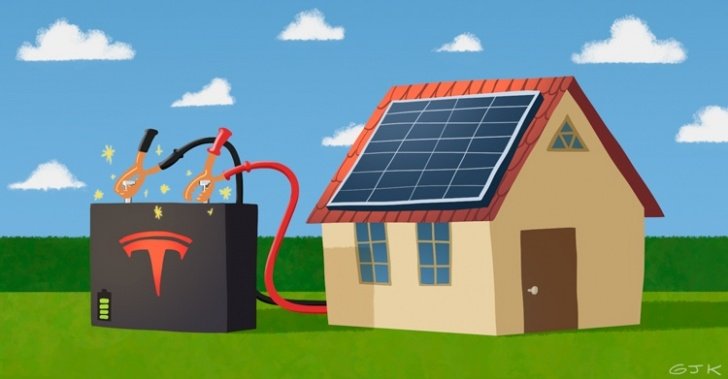
SOLAR PANELS AND BATTERIES
Solar panels and batteries or only solar panels. The popularity of solar panels has led to the emergence of a new (old) technology: the storage of solar energy by batteries.
These batteries store the excess energy, so that at times when little or no solar energy can be generated, such as on cloudy days or at night, a house can still use solar energy.
But is an installation of solar panels with battery an intelligent investment? Will I always have electricity available for my home’s consumption?
SOLAR PANELS AND BATTERIES
The storage of solar energy in batteries has not yet reached the mass market, but also thanks to companies like Tesla with Powerwall, they are gaining popularity, also in our region.
Many installers now also offer battery storage. And with good reason, the utopia of becoming completely independent (outside the network) of an energy supplier is very attractive, especially with the increase in energy prices.
In addition, batteries are becoming increasingly interesting with the increase of the electric car, where the energy extracted from the sun charges the car at night.
Are batteries an adequate technology?
In the United States and especially in Australia, more solar panel systems with batteries are being installed than without them. Also in Europe, we hope that this will be the case within a few years, certainly when the batteries are more affordable.
Before further analyzing the storage of the battery and if this technology is adequate, it is good to understand how the batteries work and this along with the installation of a solar panel.
The production of electricity at a glance
With a traditional installation of solar panels , electricity is generated from solar panels. This current is converted into a direct current to alternating current inverter to be compatible with electrical appliances.
This power is used directly by the devices. The current that is not used is injected into the electrical network. When the solar panels generate more than the electricity that is used, you will see that the counter recedes, this is a form of subsidy .
That asasi my solar panels generate more electricity?
If you generate more energy than you consume, you will not be reimbursed for this energy. For example, a solar panel system supplies 4000 kWh per year, but its consumption is 3500 kWh, then it loses 500 kWh in power. This is where a battery storage system is interesting.
When it provides a battery system for installation, the excess energy is stored here directly from the solar panels. When the consumption is greater than the performance, this additional energy is used from the battery system and not from the electrical network.
This makes life outside the network a possibility. Only when the battery is empty and no solar energy is generated, the power is taken from the power grid.
Solar panels generate the best performance when usually not at home during the day.
Most electricity is consumed at night, with a battery, the energy that is normally injected back into the network is stored and, therefore, it is used effectively when at home at night.
It is also possible to store electricity from the electricity network. This is particularly interesting in the hours of low activity or nightly rates.
The battery can be charged when electricity is cheaper and then use the electricity stored during peak hours when electricity is (much) more expensive.
How do batteries and solar panels work together?
A solar panel battery system works just like the familiar small batteries that we are all familiar with.
They are charged by injecting electricity, with small batteries, this is done directly from the electricity grid and with a system of solar panels directly from the solar panels.
When electricity is used for appliances, electricity is converted to alternating current through the inverter. Many batteries as Tesla powerwall have an inver s or incorporated.
There are different types of batteries, each with its own characteristics:
- Lithium ion batteries : this type of battery is recommended for the storage of electricity with solar panels. Its storage capacity is very large compared to the weight, the load is carried out quickly. Well-known battery brands, such as Tesla or Enphase, use lithium-ion batteries.
- Lead-acid batteries : lead-acid batteries are the oldest and have been used for off-grid applications for quite some time. In terms of price, about half of the lithium-ion batteries are low. Their main disadvantage is that they can not discharge more than half, which means that a large battery is required for the solar panels, which makes it financially less interesting.
Can I disconnect from the network with solar panels?
Battery storage makes it possible to live ‘out of network’. Living outside the network, it becomes completely independent of the power grid and becomes completely self-sufficient in its own production of energy.
Although it is possible, we discourage this situation for three reasons:
- Strongly descending prices
- Reverse counter works as a battery storage
- The system must be large enough (read: very expensive)
Strongly descending prices
The price of batteries falls around 20% per year. This is a trend that was also noticed with solar panels a few years ago, although the decrease was less rapid.
We expect battery prices to drop considerably in the coming years, so our advice is to wait a little longer. Studies have shown that the ‘tipping point’ where batteries become financially interesting is around 2018-2020.
Reverse counter works as a battery storage
In Belgium, when it generates more electricity than the one used, this electricity is injected back into the electricity grid and consumed by other users.
Because your network operator buys electricity at the same price as the one you pay for, the electricity network can be considered in principle as a type of battery storage. However, if you generate more energy than the one used, you will not be reimbursed.
With the appearance of the smart meter there is talk of abolishing or changing a meter from March to back in exchange for a fixed compensation, so it can be more attractive to install batteries.
The system must be large enough
When you are out of the network, you can not use the electricity from the network. In other words, you must be completely self-sufficient in your electricity consumption.
During the winter, when the days are short and usually not sunny, it can be very difficult to store enough electricity in the batteries. Then you should consider a battery system that can cover up to 80% of your consumption for a few days.
If you use an average of 4000kWh per year, this means 11kWh per day. For 3 consecutive days in low sunlight, you need a battery storage of more than 25kWh. Nowadays, these systems cost 13,000 euros quickly and will be multiple batteries (the Tesla Powerwall 2 has a capacity of 14kWh).
Battery prices
The prices for battery storage are constantly changing. Therefore, it is practically impossible to give a target price.
As with a complete installation of solar panels, it is important to start calculating the price per kWh and not simply look at the price of a battery without further ado.
To calculate the price, use the following formula:
Price per kWh = (price / capacity of the battery * total number of cycles * efficiency * percentage of download)
Before delving into a calculation example, it is good to see what each component of the formula means:
- Price of the battery: The price at which the battery is sold.
- Capacity : the amount of energy that can be stored in the battery.
- Total number of cycles : to express the useful life of a battery, observe the number of cycles guaranteed by the manufacturer. This is the standard to indicate the life of a battery.
- Percentage of discharge: not all batteries can be completely discharged, since this considerably reduces the useful life. A battery with 10kWh and a 50% discharge rate in principle can only provide 5kWh of power before it needs to be recharged. This data is always included in the specifications of a battery. Lead acid batteries have a low percentage of discharge.
- Efficiency: the efficiency of a battery indicates how much energy is lost during the discharge cycle and how much energy can be effectively stored in the battery. A 10kWh battery with an efficiency of 90% can store and use 9kWh of energy.
We take the Tesla Powerwall 2 as an example:
- Price of the battery: 6300 euros
- Capacity: 13.5kWh
- Total number of cycles: 3650 (guarantee of 1 cycle per day for 10 years)
- High percentage: 100%
- Efficiency: 90%
Formula : 6300 / (13.5 * 3650 * 0.90 * 1) = 0.14 EUR / kWh
This is much cheaper than electricity from the power grid. But then you have to use a complete cycle, which is equivalent to almost 5000kWh per year.
Battery brands
When you say solar panel battery, you immediately think of Tesla with the Powerwall. But Tesla is by no means the only brand, other (known) brands are involved in the battle.
Tesla
With the Powerwall, Tesla has completely broken the solar panel battery market. Meanwhile, there is the second generation of Powerwall 2, which has reduced the price per kWh by more than half compared to the first Powerwall.
The Tesla Powerwall 2 is the lowest € / kWh battery available in the market today. Tesla says that within a few years the battery market will be larger than the market for full solar panels.
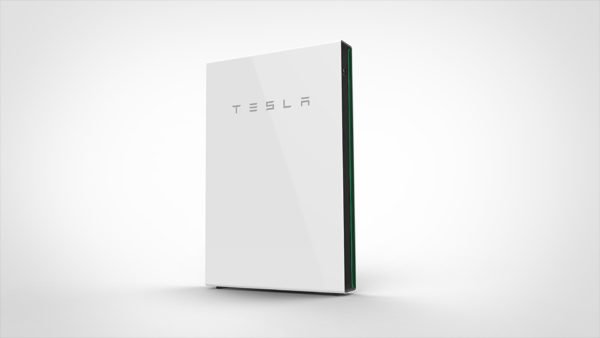
Mercedes Benz
In mid-2016, Mercedes-Benz also hit the market with its own solar panel battery. This first version has a storage of 2.5kWh and a total of up to 8 batteries can be connected.
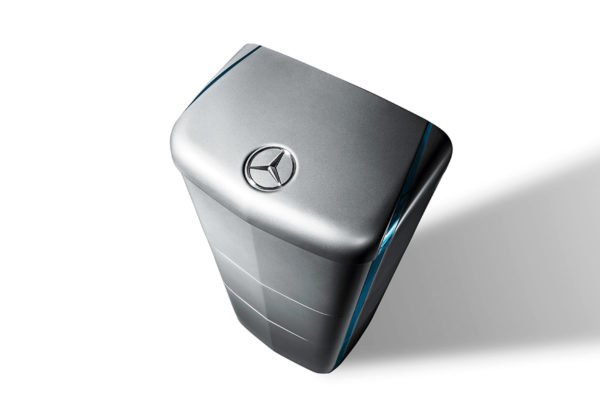
SMA
Another well-known brand, SMA, best known for its extremely robust inverters, now also has its own inverters with integrated battery.
The Sunny Boy Storage, and for those who want more, the Sunny Island are the first versions of the company and range from 2.5kWh to 25kWH when connected in a battery pack.
LG
LG, the electronics giant with a good reputation in the solar panel market, has now also developed its own battery, the LG Chem RESU.
Enphase
The brand known for its reliable micro-inverters now also comes with small batteries with a capacity of 1.2kWh per battery. Especially the specifications are unprecedented with a performance of 96% and a discharge percentage greater than 95%. With this they want to compete with Tesla.
Integrated inverter battery
An emerging trend is to combine the battery with an inverter. SMA and Tesla with the Powerwall are some examples of this. In the long term, we hope that this will become the norm and that prices will go down even more as a result.
How to choose solar panels and batteries?
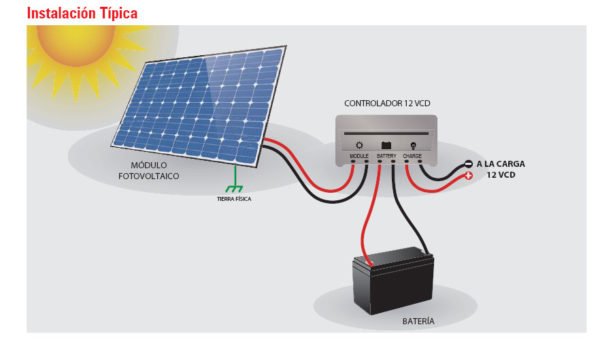
We explain how to select the best batteries according to the solar panels that we install in our project
The priority function of batteries in a photovoltaic generation system is to accumulate the energy produced during daylight hours to be used at night or during periods of bad weather.
Another important function of the batteries is to provide a higher current intensity than that generated by the photovoltaic system at any given moment.
To give the system autonomy of at least five days without receiving power from the solar panels, the nominal capacity of the battery bank recommended in 12 volts for the different generators is:
- For a 10w and 12w solar panel, a 55 Ah battery is recommended.
- For a 20w solar panel a 70 Ah battery is recommended.
- For a solar panel of 35w (self-regulating) and 40w with a regulator a 110 Ah battery is recommended.
- For a solar panel of 50w (self-regulating) and 65w with a regulator a 150 Ah battery is recommended.
- For a solar panel of 70w (2 panels of 35w self-regulating) and 80w (2 panels of 40w) with regulator a 220 Ah battery is recommended.
- For a solar panel of 100w (2 panels of 50w self-regulated) and 130w (2 panels of 65w) with regulator a 300 Ah battery is recommended.
- For a 260w solar panel (4 panels of 65w) with regulator, a 450 Ah battery is recommended.

